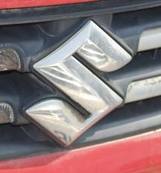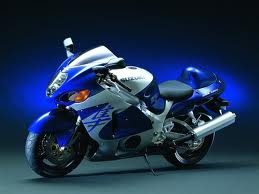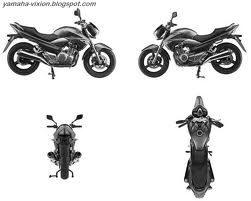Contrary to popular belief, the production of cars by Suzuki to move to a two-wheeler market, but has been allocated the first days of the company for the production of textile looms. The father of the company, which was established Michio Suzuki, the son of Japanese cotton farmer, a new version of the textile machine in a coastal village in Hamamatsu, Japan. Built a successful business on his invention, and to provide jobs and wealth for the company and its employees during the first thirty years of the embodiment of his position.
Decided that in spite of the looming of the business and was still enjoying success, Suzuki believes that the time has come to diversify, and after studying the requirements of the market, that the way forward will put the car. In 1937, the program has been launched for development, and within two years was the construction of several models of integration of the gearbox and the aluminum crankcase. However, the company has also announced a setback to the Japanese government civilian cars commodity is not necessary at the outbreak of World War 2. When the war ended, Suzuki once again concentrated on the production of looms on the horizon for the U.S. government gave the green light for the shipment of cotton to Japan. The company thrived for a short period also increased requests, but was pulled the rug out from underneath when the cotton market collapsed in 1951.
This has proved the death knell for Suzuki operations, but rather than call it a day, and the company once again turned their eyes cars. At this time, Japan has an urgent need for transport, cheap and reliable, and a number of companies have started to produce videos on the engine which can be installed on a bicycle. The breakthrough came with the development of Suzuki motorcycle called 'free power. This car is unique of its kind equipped with a 36cc, the first to feature dual-sprocket gear system, which allows passengers to travel by pedal power alone, or helped to pay only threats to drive the engine. And thus opens up new avenues for new innovation, that the nascent democratic government grant for Suzuki to help research in motorcycle engineering. This is a history of Suzuki Motor Corporation. By the year 1954, and motorcycles 6000 'Colleda carbon dioxide to pass outside the factory gates every month. It was one Colleda 90cc cylinder machine, which proved good enough to win the Speedway prominent during the first year of production. At this time, Suzuki has also started to develop cars and 'Suzulight', which featured front wheel drive and four-wheel independent suspension.
In 1955, Suzuki produced the greatest progress in the form of 125cc four-stroke 'Colleda Cox, and improved version of the stroke and two so-called' Colleda San '. The model of Trinidad and Tobago, introduced in 1956 in essence a pilot cycling Grand Prix. According to today's standards, and considered Trinidad and Tobago as a high-performance machine, capable of reaching speeds of more than 80 miles per hour, leaving in its wake, and machines with the power much more than that in the invite. This motorcycle also showed a touch of quality and there is some luxury accessories, and among these indicators.
By the year 1958, were 50, 125 and 250cc motorcycles available from Suzuki, and was presented to the familiar 'S' logo. Many of you know that the logo still used on the motorcycle today. The engineering research go hand in hand with the brand of the company, when in 1960, Suzukis made her first appearance in the Isle of Man, a milestone each of the departments. By 1962 had claimed their first World Championship road race in the category of 500cc. In 1964, the company set its sights on the Grand Prix motocross, but we have achieved limited success.
1976 saw the introduction of a set of four-stroke devices, such as the GS400, and a twin 400cc GS750 750cc. The GS850G shaft driven along in 1978. So it was called 'Superbikes' began to emerge and put GS1000S Suzuki contribution to this category. In 1982, the introduction of XN85 turbo, before the year was out, and the Suzuki claimed their eighth victory in a row in the category of 500cc.
In 1955, Suzuki produced the greatest progress in the form of 125cc four-stroke 'Colleda Cox, and improved version of the stroke and two so-called' Colleda San '. The model of Trinidad and Tobago, introduced in 1956 in essence a pilot cycling Grand Prix. According to today's standards, and considered Trinidad and Tobago as a high-performance machine, capable of reaching speeds of more than 80 miles per hour, leaving in its wake, and machines with the power much more than that in the invite. This motorcycle also showed a touch of quality and there is some luxury accessories, and among these indicators.
By the year 1958, were 50, 125 and 250cc motorcycles available from Suzuki, and was presented to the familiar 'S' logo. Many of you know that the logo still used on the motorcycle today. The engineering research go hand in hand with the brand of the company, when in 1960, Suzukis made her first appearance in the Isle of Man, a milestone each of the departments. By 1962 had claimed their first World Championship road race in the category of 500cc. In 1964, the company set its sights on the Grand Prix motocross, but we have achieved limited success.
1976 saw the introduction of a set of four-stroke devices, such as the GS400, and a twin 400cc GS750 750cc. The GS850G shaft driven along in 1978. So it was called 'Superbikes' began to emerge and put GS1000S Suzuki contribution to this category. In 1982, the introduction of XN85 turbo, before the year was out, and the Suzuki claimed their eighth victory in a row in the category of 500cc.











No comments:
Post a Comment